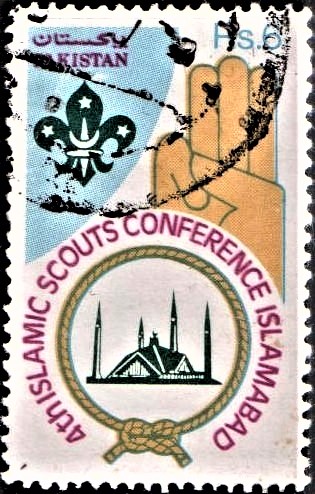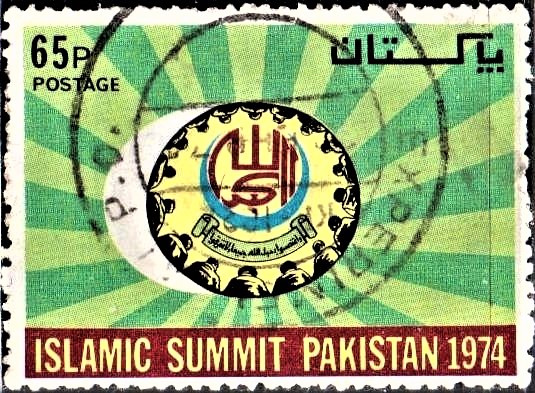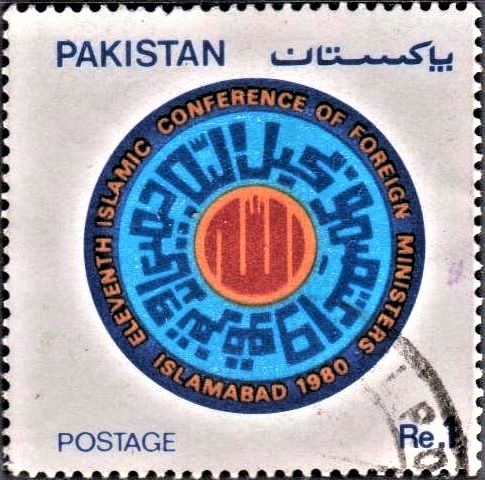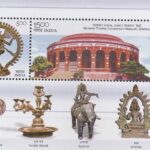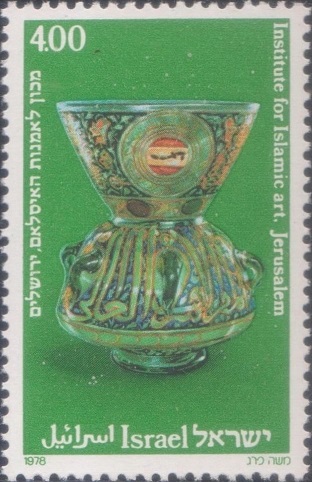
Institute for Islamic Art, Jerusalem
Complete set of 3 nos. of postage stamps on the Leo Arie Mayer Memorial Museum for Islamic Art :
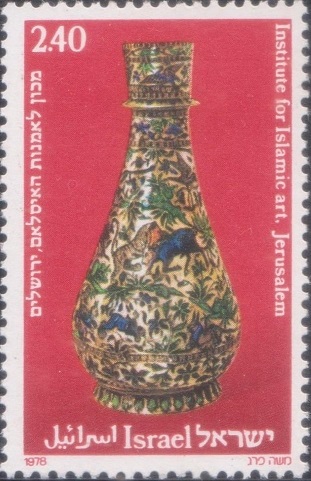
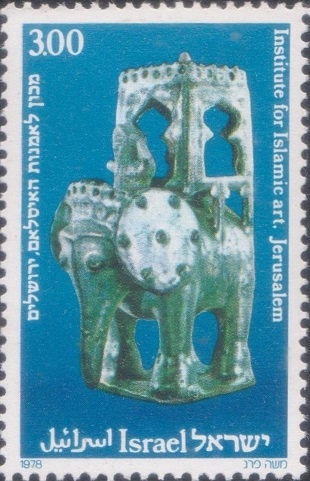
 Issued by Israel
Issued by Israel
Issued on 31 Oct, 1978
The Designer : The stamps were designed by M. Pereg, Tel Aviv
The objects of Islamic art exhibited at the museum were acquired by Prof. Richard Ettinghausen, New York, U.S.A.
Type : Stamps, Mint Condition
Colour : Multi colour
Denomination : 2.40, 3 & 4 Pound
About :
- The L.S. Mayer Memorial for Islamic Art was conceived and endowed by the late Mrs. Vera Bryce Salomons. She established the Institute in Jerusalem in memory of her friend and teacher, Professor Leo Arie Mayer, moved by a desire to stimulate the Israeli public, to a perception, appreciation and understanding of the cultural heritage and superb artistic achievements of the peoples among whom Israel’s culture is emerging. This aim, she felt, could best be achieved by a museum, approaching the public through the visual media of exhibition and display, easily comprehensible to all.
- Exceptional effort and expertise have gone into the selection of the thousands of beautiful objects for the Memorial’s collections. In varied materials and styles, they exemplify the artistic traditions which developed from the seventh to the eighteenth centuries among the many races and creeds in the lands of Islam. The objects on exhibit – pottery and glass, calligraphy and miniatures, woodwork and tiles, metal and leatherwork, textiles, jewellery and ivory carvings – originated in Egypt, Syria, Iraq, Turkey, India, Afghanistan and, above all, Iran. Byzantine, Coptic, Armenian and Jewish craftsmen contributed of their skill and artistic traditions, whereas Chinese influences on the miniatures and pottery of Iran and Turkey were of major importance. The comprehensiveness of source, tradition and media in Islamic art is proof, if proof be needed, that art and scholarship know no borders.
- There is much for every taste in the Memorial’s exhibition halls. Hundreds of visitors from town, village, and kibbutz come to the Museum daily to enjoy its splendid collections. Arab visitors – adults and children alike – find in the Museum an impressive display of their own artistic tradition. The beautifully chased and inlaid helmets, the protective mail, and the glided and bejewelled horse trappings exert a special fascination on lovers of arms and armour. For chess enthusiasts, there is a unique display of gaming pieces in various styles and materials. A special place in the Treasury Room is reserved for precious objects, jewellery, and gold and silver vessels. Arabic script abounds in endless and most decorative variations and media on the pages of the Koran. The ceramic tiles are executed in glowing tones, and the illustrative figures in Persian miniatures are a delightful reflection of a rich medieval civilisation. A display of Turkish shadow figures, a charming, but now virtually extinct tradition, has particular appeal for lovers of folk art.
- Deviation from the strictly Islamic marks two interesting rooms. One houses an “East-West Collection”, demonstrating mutual influences between Europe and the Islamic world. It displays strikingly vivid seventeenth and eighteenth century European paintings of the Turkish court, metalwork done by Arab craftsmen in Venice and paintings and porcelain made for fashionable circles in eighteenth century Europe who delighted in Oriented costume and architecture. That Europe, in turn, left its impression on the East is evident in the East-West Room’s display of Indian and Persian miniatures on European and Christian themes. The second non-Islamic room displays an extremely important collection of clocks and watches, automata and music boxes. Technically, historically and artistically, this collection is a source of never-ending fascination and delight. At the Hebrew University and at the universities subsequently established in Israel, Islamic and Arabic studies, including Islamic art, have always occupied a place of prominence. There were, however, few opportunities for the Israel public to see actual works of Islamic art. The Israel Museum, established in 1965 in Jerusalem helped to bridge the gap somewhat, but its Islamic section is only one of its many interests. In setting up the Mayer Memorial, Mrs. Salomons responded to a genuine need.
- The selection of suitable exhibits and the assembling of a representative collection posed many problems of major significance. The zenith of development was by no means reached simultaneously in the various countries of Islam. An endeavour had therefore to be made to select examples representative of the highest artistic standard at any given period.
- When Mrs. Salomons died in 1969, the building of the Memorial was far enough advanced for her to have known that this, the greatest of her benefactions, would realise her hopes of achieving a better understanding between Arabs and Jews, which led to her interest in the work of Leo Arie Mayer, Professor of Islamic Art and Archaeology at the Hebrew University. His spirit and great scholarly achievements are commemorated in this institute.
Subscribe
Login
0 Comments
Oldest


